Winner of the GRAND PRIZE at Venice Immersive 2025, THE CLOUDS ARE TWO THOUSAND METERS UP is the beautiful and poetic new piece by Singing Chen, following the acclaimed THE MAN WHO COULDN’T LEAVE.
After the sudden death of his wife, Guan discovers her unfinished novel — a tale intertwining the endangered clouded leopard and the Rukai tribe’s sacred origin myth, which tells of their descent from the elusive animal. Grief-stricken and seeking connection, he sets out on a surreal journey into dreamlike scenes — a maze of the subconscious, mist-shrouded forests, ancient tree hollows and symbolic inner landscapes.
Adapted from a short story by acclaimed Taiwanese author Wu Ming-Yi, THE CLOUDS ARE TWO THOUSAND METERS UP is a single-user, free-roaming VR experience that blends literature and memory into an intimate exploration of love, loss and self-reflection.
At this year’s Venice Immersive, one work won over almost everyone with its powerful emotional intensity and mesmerizing visual design.
THE CLOUDS ARE TWO THOUSAND METERS UP is a piece we at XRMust had been eagerly awaiting, given how much we admired Singing Chen’s earlier work, THE MAN WHO COULDN’T LEAVE, which won Best Experience at the Venice Film Festival in 2022.
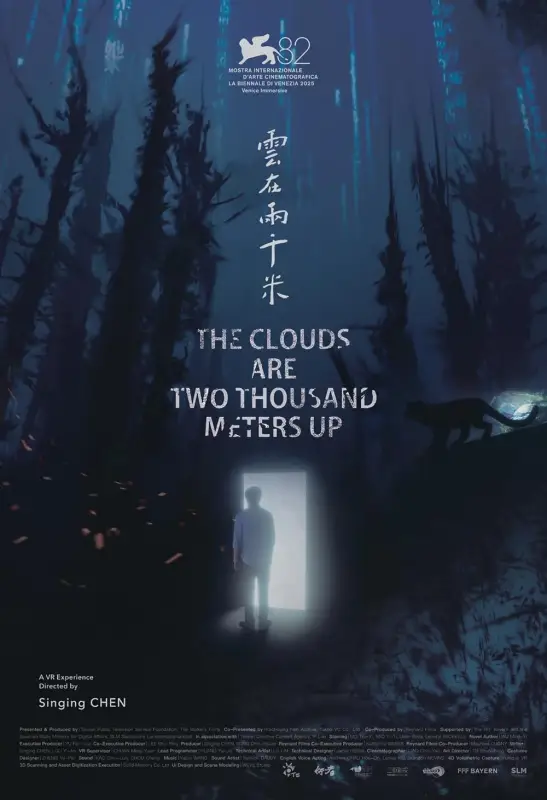
While that work screened at Venice in one of the Lazzaretto Vecchio’s so-called “jellyfish” stations, THE CLOUDS ARE TWO THOUSAND METERS UP, this year, was tucked behind a closed door. It was a fitting choice for an installation that felt like stepping into another world the moment you crossed the threshold.
Some immersive works hit like an avalanche, for their charged themes and the raw emotional shock they carry. Then there are works that are far subtler yet take complete hold of you. THE CLOUDS ARE TWO THOUSAND METERS UP belong to the latter: never overbearing, it makes you forget the headset, the running time, and the usual fatigue of VR, to sink you entirely into the story.
This new project by Singing Chen is sublime in how it maps the pathways and branching patterns of the human mind and conveys the emotions tied to them. Drawn from the novel by the celebrated writer Wu Ming-Yi, the story finds new life in virtual reality, at once vividly concrete and fantastical, and it moves you deeply at every turn.
And on a personal note: thank God pineapple pastries were on hand to comfort softies like me, crying our eyes out as we followed Guan into the magic forest that might just hold the answers he’s after.
We spoke with director Singing Chen, VR Supervisor Chuan Ming-Yuan, and Lead Programmer & Visual Supervisor Huang Yu-Jie. Here’s what they shared with us.
A new format to approach the story
SINGING CHEN — My two previous VR works, AFTERIMAGE FOR TOMORROW and THE MAN WHO COULDN’T LEAVE, were 360 live-action pieces. When we showed them, we kept seeing the same pull: audiences wanted to get closer to the characters and to the world. It’s witnessing that desire that pushed us to explore a 6DOF format for THE CLOUDS ARE TWO THOUSAND METERS UP. We wanted to offer our audience the chance to really look, to dwell on details and perceive the story at an intimate range, rather than stay anchored to a single vantage point.
CHUAN MING-YUAN — That goal was anything but simple to obtain, however. The story itself is very intricate, with many elements and shifting scenes, each demanding attention. Our characters were performed and captured volumetrically, so acting and capture had to happen in sync. That density of detail became one of our main challenges, and it shaped the entire pipeline.
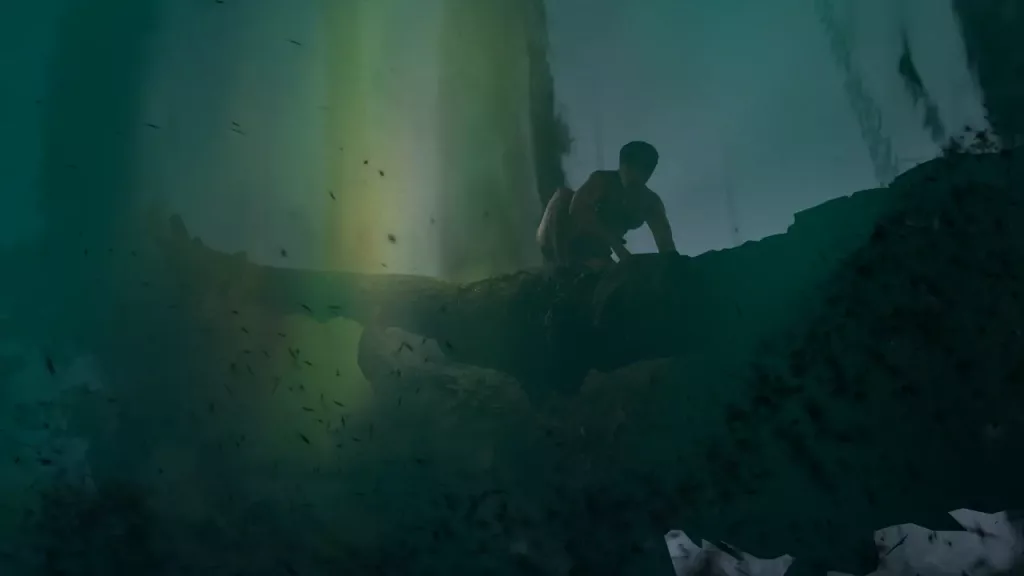
HUANG YU-JIE — Because we aimed for 6DOF VR, we ran extensive tests and long discussions early on. We landed on Gaussian splatting as the most viable way to rebuild realistic environments and objects in the engine. Gaussian splatting is indeed a powerful technique to do all this inside a game engine, inside a virtual world, but the output can feel overly pristine, almost neutral. So our task was to interpret that raw data, shaping it with texture, and lighting so as to carry the story’s emotion and aesthetic.
S. C. – Take the forest, for example. It became our test case for what Gaussian splatting could and could not do. We spent weeks debating how to stage it and how to capture it. We explored hand-built 3D modeling and several scanning pipelines, but none felt right for this project. We committed to Gaussian splatting only at the last moment, with open questions about execution still on the table.
So, we brought the whole team into a forest in Taiwan and captured it on site, scanning trees almost one by one, area by area, to build a dataset that would hold up at close range.
Once we had the material, Chuan assembled and shaped it into the engine. The forest is real, but the look is authored. We tuned lighting and textures so the space serves the story rather than reproducing the location exactly.
All this is made possible by our lead programming team — four core members: CHUANG Ming-Yuan, HUANG Yu-Jie, Liz LIN and Jamie HSIEH. They are not only technicians or engineers; they are artists, key authors of the piece. The methods they use are highly specialized and always purpose-driven. They never apply a tool for its own sake; every choice comes with careful thought about what it should communicate. Without that level of craft, the most delicate parts of the story would not land. Their thorough, sensitive approach is what lets the technology carry emotion and makes the work feel truly finished.
From the novel to the VR experience
S. C. — On the narrative side, the piece adapts Wu Ming-Yi’s novel THE CLOUDS ARE TWO THOUSAND METERS UP, whose structure already braids multiple timelines and states of mind: the protagonist Guan’s first-person present, his memories, the novel written by his late wife, the wife’s digital footprint in the “cloud chasm,” as well as mythology, and more. These multiple layers of time and space naturally lend themselves to the medium of VR, where different technologies can be used to create distinct aesthetic forms for each dimension.
The novel itself is prose-like, constantly shifting across time, and in parts almost stream-of-consciousness. It also carries a wealth of ecological and scientific knowledge.
During the adaptation process, I spent a great deal of time analyzing the text, mapping out the temporal and spatial timeline of the novel and clarifying Guan’s journey of searching before beginning the actual adaptation.
The greatest challenge was how to condense a ten-year journey (in the novel, Guan spends a decade after his wife’s death before completing his search) into a 50-minute experience, while still allowing the audience to follow and be emotionally moved by the story.
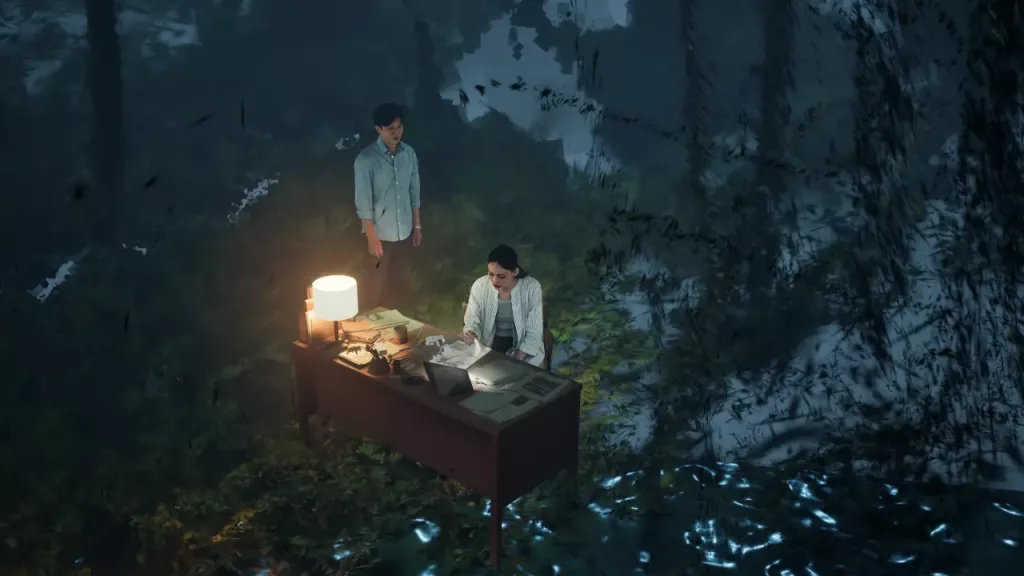
To achieve this, I structured the search as a progression from the outermost layer to the innermost: from reality, to memory, to the wife’s digital traces, to her novel, then into the field research, and finally into the myth itself — a gradual, layered deepening. In short, this became the core narrative strategy of the adaptation.
Formally, because this is a free-roaming VR experience, I could transform the novel’s most captivating elements — the texts, letters, and ecological knowledge — into environmental objects. This allows audiences to explore freely in space, adding joy to the act of discovery while strengthening the story’s background. Yet I also had to carefully balance “spatial sensory experience” with “narrative cohesion.”
THE CLOUDS ARE TWO THOUSAND METERS UP, a shared journey
S. C. — This balance was a central challenge. We wanted to tell a clear story while still letting people roam, look closely, and make discoveries on their own.
The question was how to preserve that freedom without losing momentum. Viewers needed to absorb the plot even as they looked around; at the same time, the narrative had to keep advancing so their connection to the characters deepened. Holding clarity, agency, and progression together shaped countless choices and had to be considered at every step.
The most crucial element to preserve was the sense of journey: the audience must feel they are searching alongside Guan. A search for what is disappearing, slipping away from us. Loss can take many forms: a culture, an endangered or legendary animal, a wife who has died. It can also be the character of Guan himself, lost in the pace of daily life. We wanted people to make this journey by themselves, seeking and trying to find that something throughout the experience.
To obtain all this, what I had to abandon or change from the novel included the original prose-like, stream-of-consciousness narrative jumps in time and space, because such a structure would be incomprehensible in VR.
Furthermore, in the novel, the wife’s character is almost voiceless, existing only through Guan’s narration. In the adaptation, I elevated her subjectivity — she could no longer remain only a figure in Guan’s words but had to speak with her own voice.
I also had to work on the many secondary characters Guan encounters during his decade-long journey. For the sake of clarity, I condensed and rewrote some of them, while giving more presence and agency to characters such as A-Bao and the grandmother.
Y. J. HUANG — Another relevant element was the design of the maze, the corridor sequence. For the maze we spent a long time deciding the routes people would walk. At times we wanted them to feel lost; at others, to feel they had found a path. All the while they should sense that Guan is searching for something, not simply lost. The act of walking becomes the point of contact between the audience and the 6DOF VR medium; it is the core of the experience. By moving through the maze, people draw closer to the story and form a bond with it.
S. C. — So, we built an environment that sets the tempo through technology, and a narrative structure that is well designed and gives bearings. But then we welcome the audience to move at their rhythm. Gradually they trace their own route, as Guan does, from scene to scene in pursuit of what feels just out of reach. The natural elements — fire, water, rain — are presences too, primal forces often overlooked in modern life. The hollow tree that appears at the end is virtual, yet it stands as Mother Nature… a Mother Tree, a sign of the larger nature that holds us. Whether it is “real” matters less than what it stirs. What we hope people bring home is personal — whether to find themselves or to reflect on what they feel, whatever they feel. The story is open, and we want everyone to have their own journey.
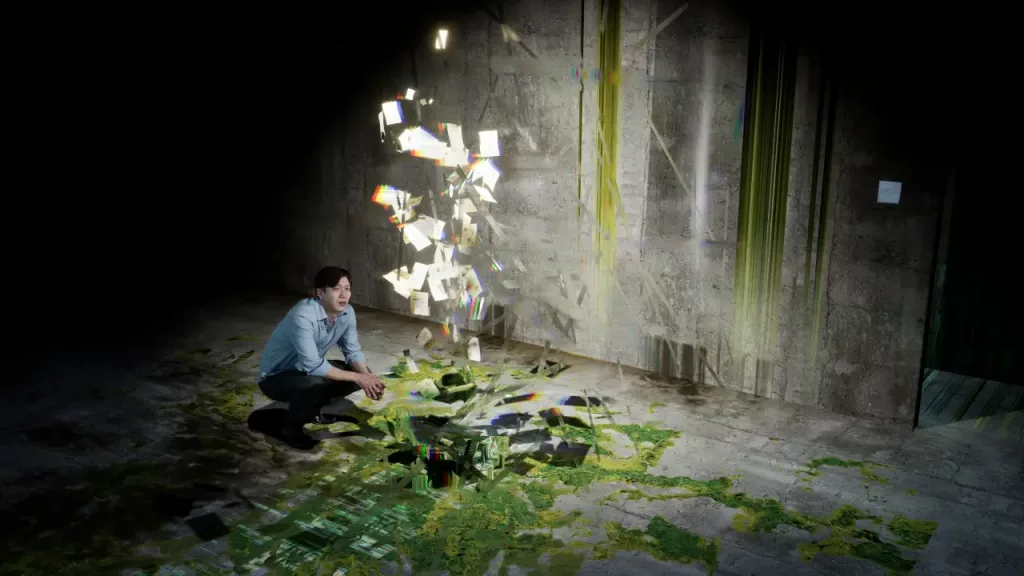
Working on a multisensory exhibition
S. C. — We aim to bring the same care for attention and presence we put into the experience to the way we exhibit it. For my previous piece, THE MAN WHO COULDN’T LEAVE, we staged a special presentation at MoNTUE, an independent art museum in Taipei and designed the entire visit: what people first saw and heard on entry, the VR itself, and what greeted them when the headset came off. We collaborated with researchers to show materials on the White Terror alongside making-of artifacts, so visitors encountered both the story and its historical context.
For THE CLOUDS ARE TWO THOUSAND METERS UP we are planning a similar approach and a special exhibition that will open next year in Taipei.
We also want to deepen the multisensory layer, including scent and airflow. At Venice Immersive, you may have perceived a light breeze when you were walking by the virtual lake; we created it in a simple, low-tech way with a fan, which worked pretty well. Next year we aim for a more considered multisensory design that supports the journey from the moment people enter to the moment they leave.
The importance of a good story: reflections on Venezia82
S. C. — Since my background is in cinema, I strongly believe in the power of a good story and strong storytelling — the ability to move audiences deeply and profoundly, in ways that make us reflect on our own lives and on the world around us.
So whether it’s VR or XR, “strong narrative” or “weak narrative,” I feel that this year’s award reflects how we can better integrate technology with storytelling, how we can express details with greater subtlety, and how we can expand the possibilities of this new medium to bring audiences more profound emotional experiences.
That said, I want to emphasize something: I myself served as a jury member in 2023, so I know how difficult the task is. Each selected work is unique in form, with its own breakthroughs and strengths. Beyond the winning piece, I also drew a great deal of inspiration from other outstanding works.
This, I think, is what makes the field so special — creators come from diverse backgrounds: cinema, theatre, gaming, animation, visual effects, and more. Everyone approaches immersive media from different entry points, and this collision of perspectives gives rise to a wide variety of works and ways of experiencing them. That is one of the most exciting aspects of attending a festival each time.
Another trend I think this year’s lineup reflects is the shared concern of how to bring these works to wider audiences, a challenge that immersive media has long faced. I myself am considering this question, and it may be reflected in my next project. However, I still believe that we should never sacrifice strong storytelling or the richness of detail in order to simply reach more viewers.

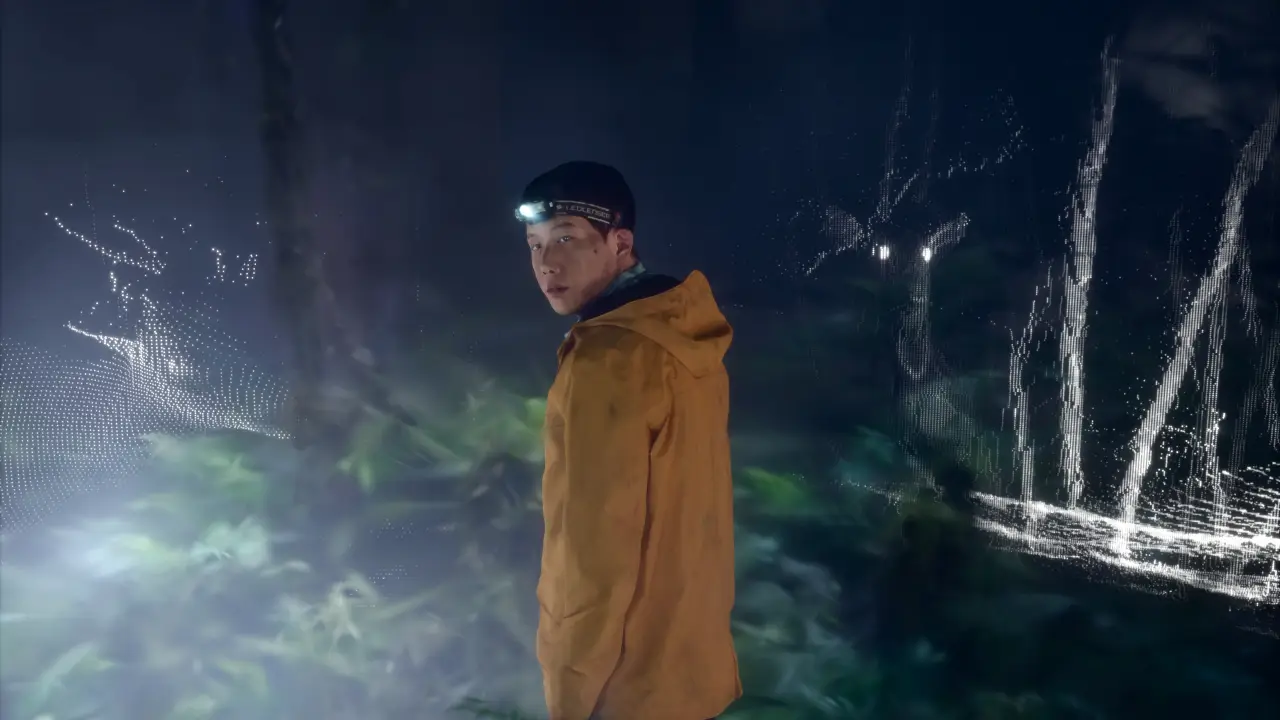

Leave a Reply
You must be logged in to post a comment.